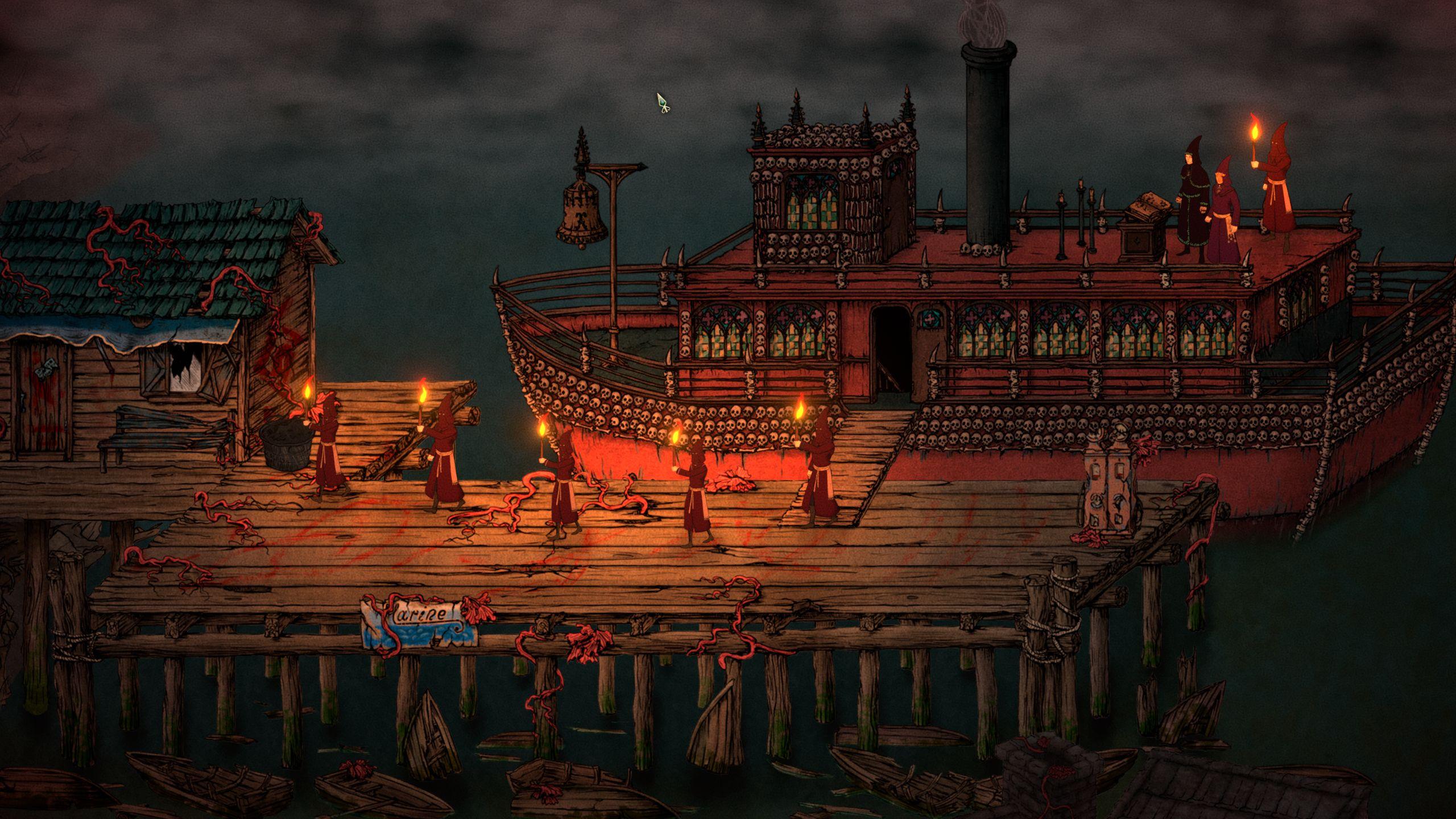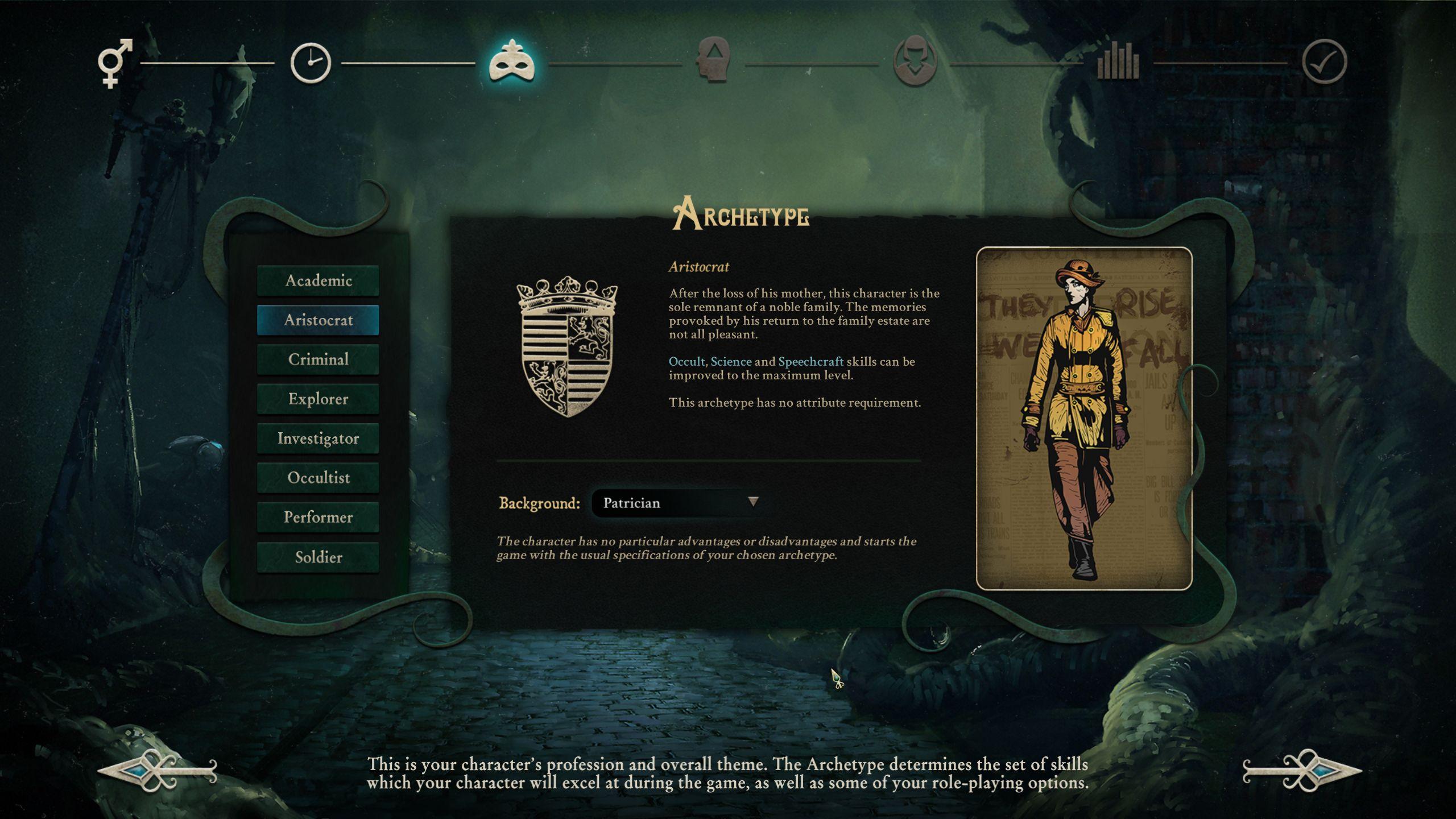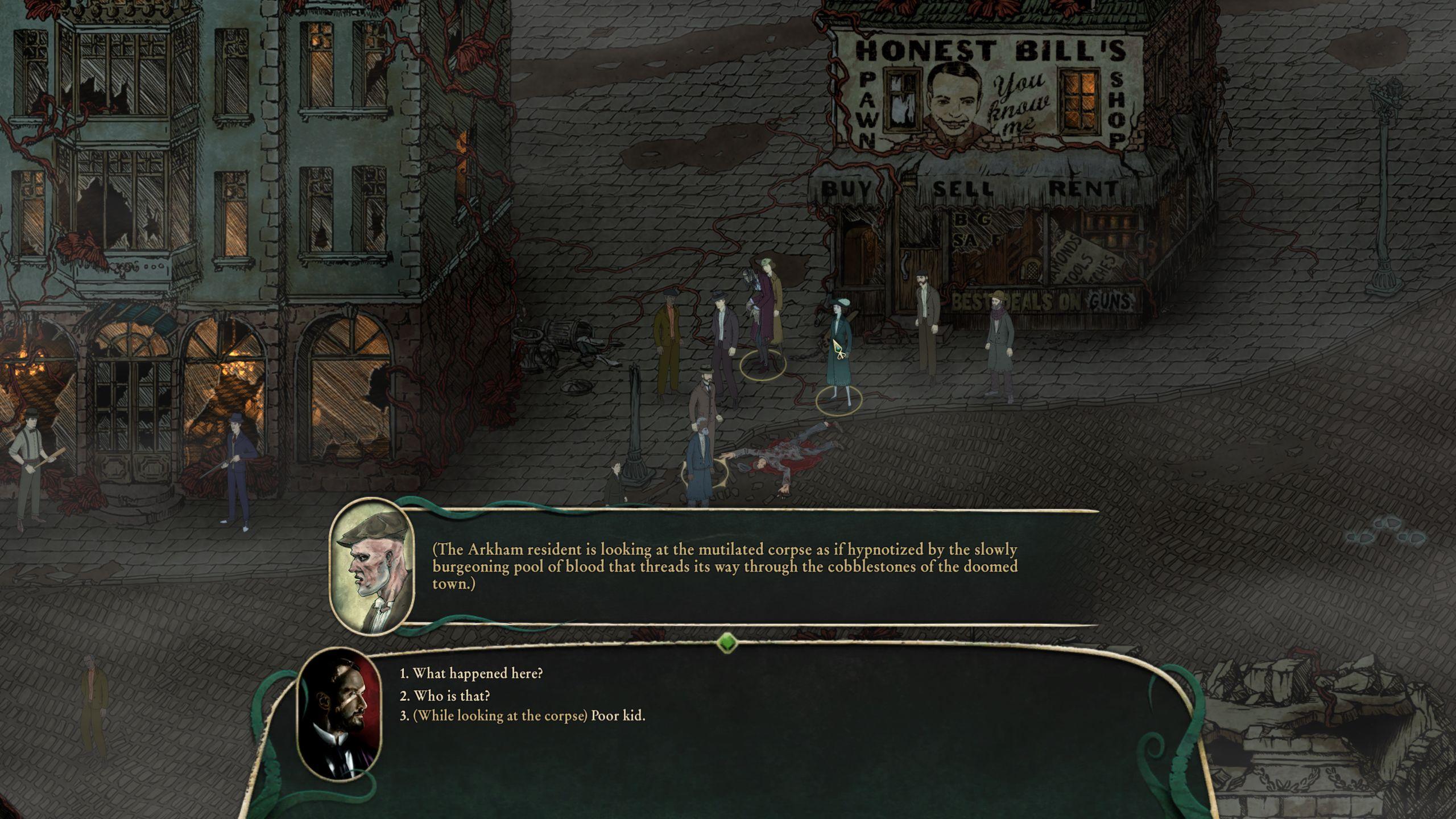
Sep
Stygian: Reign of the Old Ones – Review
In Stygian: Reign of the Old Ones, unknowable horrors have claimed their dominion on the world. Did we lose our minds? Here’s what we think.
In Stygian: Reign of the Old Ones, the world has already ended. Unspeakable horrors roam unchecked, and law and order has collapsed entirely. You find yourself trapped in the town of Arkham, which is trapped between a mob and a murderous cult. In these post-disastrous times, you find yourself searching for a mysterious, possibly-sinister entity known simply as “The Dismal Man”.
Stygian is not a typical RPG. The world is already beyond salvation, so there’s no quest to save the world from a dragon or some such. In fact, it encourages you to flee from combat in terror, rather than defeating the foes you encounter. Also—and this is shocking for a roleplaying video game, I know—but Stygian encourages actual roleplay, so that you’re rewarded for staying in-character.

When you start the game, you’re greeted by a flavourful character creation process. You can choose from a variety of 1920s backgrounds, assign your skills and attributes, your age, and so on. I’m always a sucker for games that let you pick a civilian background for your character. I settled on playing a movie actor by the name of Lewis Hyde.
The world of Stygian has clearly been crafted by ardent fans of H.P. Lovecraft, and much effort has been put into recreating Lovecraft’s vision of a world gone mad. It’s tempting to describe this world as post-apocalyptic, but it’s more accurately an apocalypse-in-progress. ‘Insanity’ has taken hold over the weaker-willed, abject horrors and cryptid creatures stalk the lands, and blood-spilling occult magic is everywhere.
Despite this grim and depressing situation, you’ll find bartenders, concierges, antique shop dealers, inventors, opportunists, and of course, lots of mobsters and cultists, all trying to eke out a living in the face of impending doom.

Although Stygian has everything it needs for combat, the bulk of the game is spent walking and talking. You’ll mainly be hunting for clues and knowledge of how to get out of the godforsaken city, and there’s a good dollop of fetch quests—some of which are so menial that they involve nothing more than going outdoors, fetching an item, and then returning.
One anachronistic problem found in the game is that it would let you progress through a certain area with no warning whatsoever that you’re going to need a particular item to complete your task. If you’ve sold the item already, then you’ll have to either backtrack or reload an old save, grab the item, and try again. And yes, that means fighting the same slow battles all over again.
Once in combat, Stygian tosses you onto a hex grid, with your mates on one side, and the enemy on the others. While there’s a lot of potential enemies for these encounters, it bothered me that one of the regular features were ‘lunatics’. It’s an ugly perpetuation of the myth that the mentally ill are given to committing violence, as opposed to being on the receiving end of it—that they are beyond saving, and must be put down.

This primitive understanding of mental health was always a common facet of Lovecraft’s fiction, where ‘insanity’ is as common as the common cold. Another ill element of Lovecraft’s that has been recreated with much reverence is the othering of non-Western cultures (at one point, it refers to the Hindu goddess Kālī as ‘demonic’)—which is natural, given that Lovecraft was a known racist and white supremacist.
As for the mechanics of combat—they’re serviceable enough that if you have any experience with turn-based combat, you’ll settle into them with little explanation needed. This doesn’t make the combat fun. Like the original Deus Ex, Stygian’s combat has been designed so that you would rather avoid it than try and hack your way to victory. Combat animations are slow and the damage dealt across both sides is so little that battles become more a test of patience than a test of wit.
An innovation that the game does introduce is the ‘progressive escape’, where once you’ve worn down the enemy enough, you are able to escape battle while gaining experience points. After all, this is not a game about becoming the strongest warrior—it’s a game about surviving unknowable horrors.

As a video game love letter to Lovecraftian horror, Stygian might be the most painstaking facsimile yet. Its well-realised atmosphere of doom permeates every map and every interaction, and the writing is descriptive and immersive enough to fit the bill. At the same time, Stygian is unable to escape the modern problem of wonky game design, and the older problems of, well, Lovecraft himself.
The devotion the game has to computer RPGs of yore makes me rather interested in what Cultic Games might cook up next—I just hope it isn’t something as tired as another Lovecraft eulogy.
Developer: Cultic Games
Country of Origin: Turkey
Publisher: 1C Entertainment
Release Date: 26 September 2019 (PC)
Check out more reviews from Into Indie Games!
